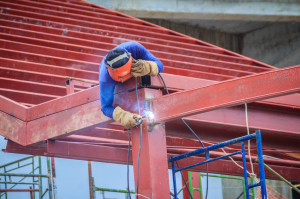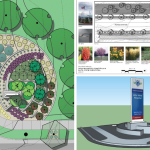 “May you live in interesting times” is an old curse. And these are certainly interesting times in the construction industry. Construction administration is facing rapid changes on a number of fronts, from labor to legal to technological.
“May you live in interesting times” is an old curse. And these are certainly interesting times in the construction industry. Construction administration is facing rapid changes on a number of fronts, from labor to legal to technological.
Here are some of the main challenges facing today’s construction administration professionals.
Skilled labor shortage
Finding people with the right skills and experience for the many different jobs needed on a construction site has been a perennial issue for construction administration. Today, however, the industry is facing a major turning point as the baby boom generation retires. The fact is, not enough younger people are choosing the skilled trades, resulting in a shortage of skilled tradespeople to replace retirees.
Industries have engaged in sporadic promotion of skilled trades training as a viable and rewarding career path, but clearly, more needs to be done.
Safety
Construction work is dangerous and always has been. A recent study of U.S. construction workers found that 71 percent of construction employees reported being involved in a workplace accident in the past year. Strict safety regulations are enforced by high financial and even criminal penalties. As a result, construction faces high costs for insurance and workers compensation coverage.
For construction administration, it means that workplace safety is the highest priority on the construction site. Site and project managers need to understand risk mitigation and be on top of ensuring consistent, continuing safety training for all employees.
Tariffs
New tariffs on steel, aluminum, lumber and other products essential to the construction industry kicked in at the beginning of the year. Even before they came into force, costs of some materials increased by 20 percent already. These price rises are expected to increase more as the effects of the tariffs ripple through the economy.
Some of these costs can be passed on to the customers and users, but overall profits are going to be affected for construction, design, engineering, developers and owners.
No productivity growth
McKinsey and Co. reported recently that the construction industry still has the same productivity as 80 years ago — that is, ratio of output to workers has not changed much, and in fact has declined since the late 1960s. Compare this to industries like manufacturing, agriculture and even retail, which have seen productivity rise 10 to 15 times over the same period.
Part of this is related to the skilled labor shortage. Workers just do not have the skills or experience needed for the job. But it’s also exacerbated by companies that try to do more with fewer people, even when it leads to less productivity and profitability.
Adapting “lean” techniques and processes, which has had a huge impact in manufacturing, depends on a great level of effective communication.
Sustainable construction administration
Construction administration is facing a great deal of political and social pressure to adopt sustainable practices and materials. In some jurisdictions, it’s even mandated.
Adopting new ways of building and new materials will require a shift in thinking and planning. It can also affect costs, at least in the short run. However, sustainable construction practices and materials can have long-term savings. Construction administration needs to be consulted at the earliest design and planning phases in order to optimize practices for the lifecycle of the building.
Integrating new technologies
BIM, augmented reality, cloud computing, mobile technology, wearable technology, robotics, GPS — all are being integrated into the construction industry at a rapid pace.
They all offer huge benefits, but at the same time, they pose challenges for construction administration. Managers, supervisors and workers will need training in using these technologies. Moreover, integrating them into the work site and planning processes will require not only education, but rethinking in processes.
Construction administration will need to become nimbler in adapting to an increasing pace in new technologies and business practices.








